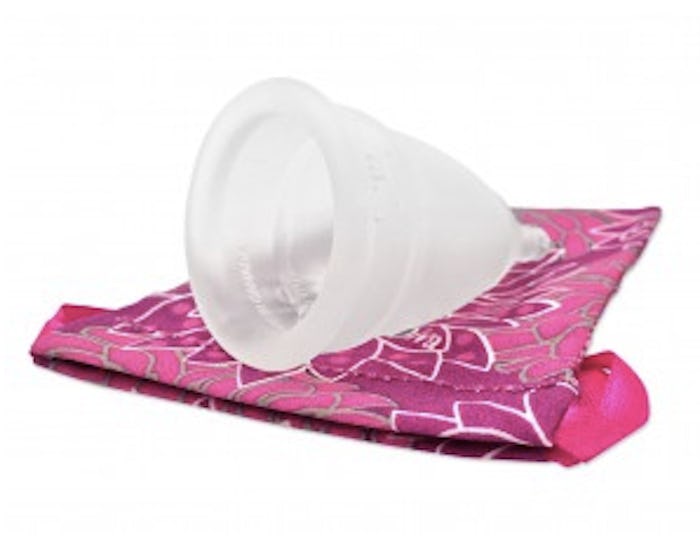Periods can be messy. What's even more messy is knowing that the methods you used to deal with periods growing up, like pads or tampons, are hazardous to the environment. In the past five years, however, menstrual cups have gained notoriety as another, more eco-friendly option. But how much do menstrual cups help the environment?
THIS magazine investigated if menstrual cups are really eco-friendly as claimed, or if some so-called greenwashing was going on. After all, menstrual cups are made of silicone which is man-made and found in stuff like make-up and automobiles. And the magazine found that menstrual cups are definitely a more eco-friendly option than pads and tampons. But, according to Dr. Michael Brook, a silicone expert at McMaster University, silicone is a pretty green ingredient. Why? As it degrades, it goes back to its original state, which is silica. And silica is not hazardous. "The safety record of silicones is exemplary, and unlike many materials used in commerce, there is a lot of data available to permit such a statement to be made," Brook said. It might be a stretch to say menstrual cups help the planet, but they're a more green alternative to pads and tampons, that are not so eco-friendly. Don't believe me? Check out the facts comparing the green-ness of menstrual cups to more traditional feminine hygiene products.
1Pads And Tampons Leave A Paper Trail
Eek. Embarrassed to say this is what my trash can looks like when I have my period. Look at all that plastic and paper! I usually wrap my used products in tissue because I don't like seeing bloody products in my trash. I bet I'm not alone, right? According to 1MillionWomen.com, an organization that fights climate change, the average woman uses 20 pads/tampons per month, which equals 240 per year. If you multiply that number by all the women on the planet, that equals... a whole lot of waste. Refinery29 reported that North American landfills contain 20 billion disposable menstrual products. And, that's not even counting all the tissue women (like me) might use in order to avoid having their trash look a bloody mess.
2Pads And Tampons Have Extra Packaging
Even if you don't wrap your used products in tissue, you're unwrapping them from a plastic or paper pouch. Menstrual cups eliminate this extra packaging, which means less waste in the landfills due to period hygiene products. Jezebel highlighted a more environmentally responsible tampon package, but even if the packaging is made from recycled materials, each individual tampon (or pad) comes with its own wrapper.
On the other hand, silicone menstrual cups last up to ten years, according to Refinery29. If every menstruating woman used one cup instead of all those pads and tampons, landfills would contain a lot less waste.
3Pads Contain Harmful Chemicals
According to the menstrual cup company Diva Cup, most pads contain polyethylene plastic, (the adhesive used to make the pad stick to your underwear) which is an environmentally harmful pollutant. Menstrual cups, however, aren't made from any hazardous materials.
4Most Tampons Contain Dioxin And Other Chemicals
Diva Cup's blog also reported that most tampons contain a chemical called dioxin. I checked out the ingredients on my Tampax brand tampons, and while I didn't find dioxin listed, I did find polyethylene and polypropylene, which according to the Polymer Science Learning Center, is a versatile plastic or fiber that has a scary looking Wikipedia page, meaning its chemical composition is difficult to understand, and probably not "natural" or good for the environment. Remember that silicone degrades back into silica. Good luck understanding what's going on with polypropylene.
5Pads And Tampons Cause More Harm Degrading In Landfills
OK, so you get that it's not eco-friendly to use products with tons of chemicals because chemicals are unnatural. While waste products sit in landfills, according to the Environmental Protection Agency, the chemicals they contain get soaked up by the earth and released as pollution into groundwater and air.
